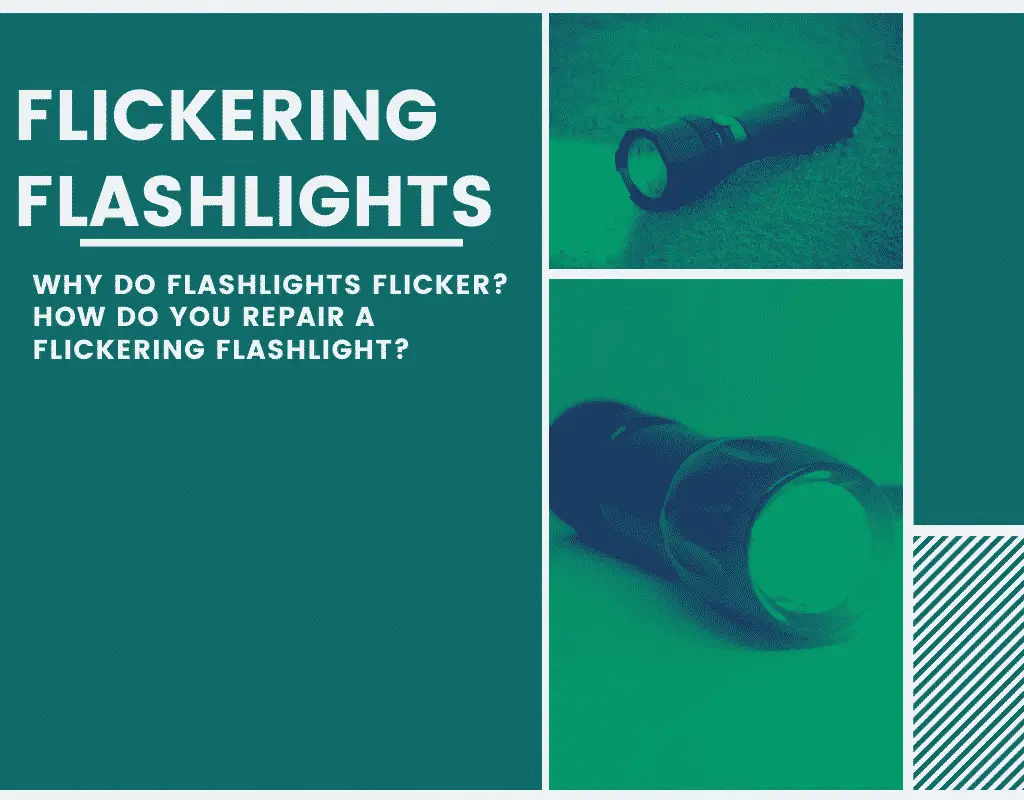Flashlights seem like such a simple product, but they can have a lot of issues. Your flashlight can be working flawlessly one minute and it’s flickering like crazy a few minutes later. Flickering flashlights are a widespread issue, but is there an easy way to fix it or are you stuck with a barely functioning flashlight?
Why do flashlights flicker and I can fix a flickering flashlight? There are a few reasons why flashlights flicker and go out, but it’s usually caused some kind of connection problem. Either the batteries levels are low, they aren’t making contact with the battery contact spring or it has a faulty switch. You can usually fix the problem by cleaning off the contacts and making sure they’re getting a good connection with the battery.
In the rest of this post I’ll explain why flashlights flicker and teach you how to repair the most common problems. It shouldn’t take long to fix a flickering flashlight and you probably have everything you need in your bathroom cabinet (rubbing alcohol and Q-Tip). The only thing you may need to buy is a pair of split ring pliers (these things) or fine tipped needle nose pliers to tighten the spring retaining rings.
Table Of Contents
Why Do Flashlights Flicker?
Flickering flashlights are almost always caused by a few common issues. Either there’s some issue with the battery (usually a dead battery or spring connector that’s loose) or there’s an issue with one of the connections.
Flashlights use simple designs so there’s hardly ever a mechanical issue that can’t be fixed by one of the steps in this post. Here are the most common reasons why your flashlight may be flickering. I’ll explain how to fix all of these problems in detail below. This is a lengthy article, but it shouldn’t take longer than 10-15 minutes to run through all of the repairs.
- Battery Issues Are The Most Common Cause Of Flashlight Flickering
- The Flashlight Case Isn’t Seated Properly (misaligned threads and inverted housing).
- The Retaining Ring on the spring and switch assembly has loosened over time.
- There’s carbon/dirt buildup on the electrical connections (clean with Q-Tip and Rubbing Alcohol)
- Burrs on the metal housing are causing connection issues(use sand paper).
- Loose wiring and bulbs are rarely the problem, but you can check (solder problem areas and tighten bulbs).
In the rest of this post I’ll go over each of these steps in detail. This is a lengthy post, but the entire flashlight repair process shouldn’t take longer than 10-15. There’s rarely mechanical issues so this guide should solve the problem in 99% of cases where you have a flickering flashlight.
How To Fix A Flickering Flashlight
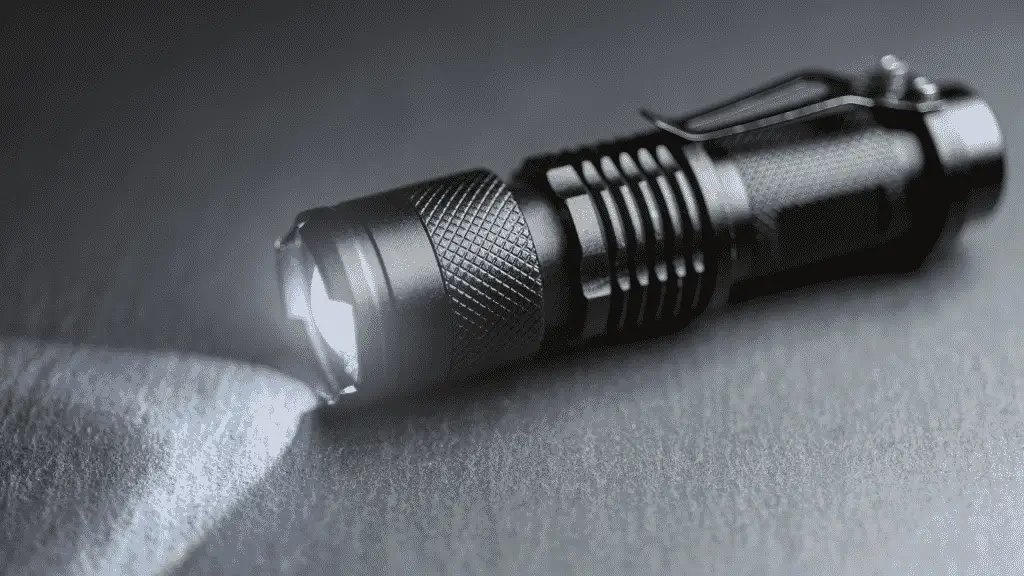
You can almost always fix a flashlight by going through this list of common fixes. I put this list in order from the most common problems to the least common. So start off at the top of the list and work your way down to the bottom.
Flashlight flickering is almost always caused by the battery not creating a proper connection with the rest of the electrical system. That could mean the batteries dead, something isn’t properly tightened or misaligned, the connections need to be cleaned, or there could be an issue with the switch or connector spring.
Flashlights use a fairly basic design so the issue is almost always caused by a faulty connection somewhere. You should be able to fix a flickering flashlight if you can find the bad connection. The only time you might run into problems is if there’s a problem with the flashlight driver.
It’s very rare to have a flashlight mechanically fail so if you follow all these steps you should be able to fix 99+ percent of flashlight problems. This is a fairly lengthy guide, but it shouldn’t take longer than 10-15 minutes to run through all of these common issues.
1. Low Voltage and Dead Batteries May Cause Flickering
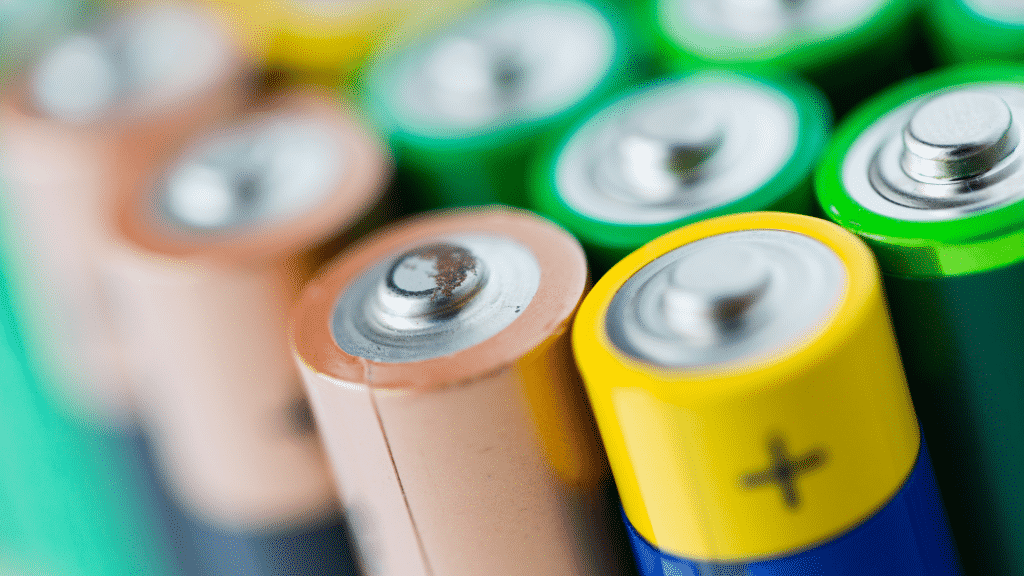
This might sound stupid, but 90% of flickering issues are caused by a dying or low voltage battery. I just made that statistic up, but that’s been that’s been the case with most of my flashlights. I’ve spent hours messing around with every possible fix and it ends up being a bad battery.
Most of the time it’s because I’ve tried using an old battery that I had sitting at the bottom of a drawer, but it’s also happened with brand new batteries. You may not have realized this, but batteries can actually expire if they sit on the shelf for too long.
Make sure you look at the best if used by date marked on the battery to see if it’s expired. I’ve ran into that problem multiple times with batteries that I’ve purchased on Amazon and at discount stores. They have old stock sitting on their shelves that hasn’t sold in a year and the batteries are almost dead.
Try A Different Brand Of Battery
I’ve had flickering issues with certain brands of batteries that don’t have a high enough voltage to power my flashlights. It’s usually because I tried to cheap out and purchased garbage batteries. I’ve had problems in the past with the Ladda Rechargeable batteries from IKEA, dollar store batteries, and the cheap batteries they give away at Harbor Freight.
They have enough juice to power low voltage items like TV remotes, but can’t handle the voltage demands of higher lumen LED flashlights. Try to test a different brand of battery to see if that’s the problem before messing around with some of these more challenging repairs.
2. Issues With The Flashlight Case
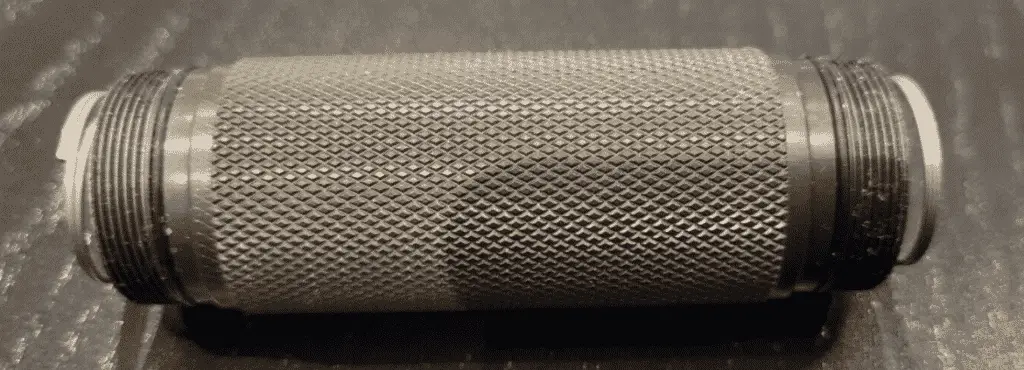
Whenever you open up the flashlight and fool around with the batteries it can cause problems. You can bend the battery springs causing a connection issue, put the battery holder in backwards, not tighten screw in the end of the case all the way, or miss a thread that causes a misaligned connection.
If messing around with the flashlight case fixes the flickering issue or completely kills the light it’s probably some a problem with how you put the flashlight case back together.
Make Sure You Tighten The Flashlight Head
Almost everybody puts the batteries into the tail end of the flashlight. Most people don’t even realize that the front end of the battery tube can be unscrewed. So they focus all of their attention on the back end and completely ignore the threads on the front of the battery tube.
This can cause issues depending on how you hold the flashlight when unscrewing and screwing in the case. It’s easy to accidentally unscrew the front portion of the tube interrupting the current. Unscrew and tighten both ends of the tube to make sure they have a good connection.
Look For Misaligned Threads and Loose Pieces Of The Case

If any part of the flashlight body isn’t tightened properly it could cause flickering issues. It might not be a problem with a fully charged battery, but as the battery drains there won’t be enough voltage getting to the LED Driver.
Start off by tightening every part of the tube assembly. There’s usually a main body, the part with the battery spring assembly (sometimes a rear push button switch), and the front head of the flashlight that contains the bulb and electronics. If any of those pieces are misaligned or not tight enough you won’t have a proper connection.
If that doesn’t work check the threads on the case to see if they’re aligned properly. Look at both the inside and outside of the tube to see if the threads are the same on both ends. It’s easy to flip around a tube or accidentally misalign the threads. If you notice any gaps in the body unscrew the case and see if you can get tighten things up by making sure you properly align the threads.
Tighten Up The Front Bezel

The front bezel is another part of the flashlight that people often overlook. Most people focus on the rear battery terminal and completely ignore the front bezel. It may not seem like the front bezzle plays a role in supplying current to the LED bulb, but it’s the last connection to the LED.
This is a really common problem with flashlights that have adjustable beam widths where you tighten/loosen the front bezel. If your trying to widen the beam and go past the outermost point you can easily interfere with the current running to the LED bulb. People rarely remove the front bezel so it’s probably not a misalignment issue so just tighten it back up to see if that solves the problem.
Check to Make Sure You Put The Flashlight Back Together Properly
Almost every flashlight can be taken apart so you can get to the electrical components inside the flashlight. I’m a tinkerer at heart, so I’m always messing around with anything that I buy. That can very easily lead to problems if I’m not paying attention.
All it takes is accidentally reversing one of the tubes, misaligning the thread as you’re screwing the case back together, or not tightening one of the sides all the way. There are a wide number of problems that can misalign or prevent your battery from having a proper connection. A fraction of a millimeter could mean the difference between a perfectly functioning flashlight and one that’s constantly flickering.
Start by checking the connection to make sure the battery spring hasn’t moved and try to tighten each section of the flashlight case. If that doesn’t work completely unscrew the end cap and make sure you check to see if the threads on both end are the exact same size and there’s no difference in the coating.
If one side is anodized and the other has bare threads that could mean that you accidentally put the tube on backwards. Flip the tube around and try screwing it back down the other way.
The part of the flashlight tube with bare metal usually attaches to the back end of the flashlight if there’s a push button switch. Anodized aluminum doesn’t conduct electricity so you need to have bare metal touching the conduction points.
The Flashlight Could Have Come From The Factory With Improper Connections
This can be a problem even if you’ve never taken the flashlight apart. Most flashlights are made in foreign countries using cheap day labor with employees that are forced to hit production quotas.
When speed increases quality control and testing will always decrease. It’s easy for an employee that’s putting together hundreds of flashlights per hour to accidentally make a mistake. All it takes is accidentally putting a tube on backwards to interfere with the connection.
The threads on one end might be a slightly different length that can cause a loose connection or one side may be anodized, which reduces conductivity, and the other side isn’t. This may not be a problem with a brand new battery, but you’ll end up with a poor connection once the voltage drops. So the flashlight may work well at first, pass inspection, and suddenly start having flickering issues once the battery drains.
Problem 3. Tighten The Retaining Ring, Check The Switch and Spring
There are three parts of the switch that can cause flickering issues: the retaining ring, spring, and switch assembly. If any of these components are loose you won’t get a tight connection to the battery. Luckily you can replace the switch assembly for $2-3 and it’s easy to install a new switch assembly.
You can buy replacement switch assemblies from any online flashlight part store. They’re all interchangeable as long as you measure the switch assembly before ordering. Pull out the old switch and install a new one
Replacing a switch on a cheap flashlight that’s under $10-$15 probably isn’t worth it. I recommend starting off by checking to see if the flashlight has some kind of warranty. Most budget manufacturers won’t have a warranty, but some of the mid-tier brands offer lifetime replacements.
I’ve had a lot of luck with Coast Flashlights over the years. They’re not even close to being the nicest flashlights on the market, but they’re fairly reliable and have lifetime warranties. Just take the flashlight back to the store you bought it at and they’ll hand you a brand new replacement.
Tighten The Spring Retaining Ring On End Switch Flashlights

The spring retaining ring is a very common issue with budget flashlights. Retaining rings are a simple design that holds the switch in, but they tiny little screws that can become loose over time. A loose retaining ring won’t allow the switch to make a complete connection.
A loose retaining ring can cause issues, but the simple design is actually a good thing since you can buy a new switch board for a few dollars. When you have a flashlight with a switch built into the end and a retaining ring it’s a double edge sword. The retaining rings come loose all the time, but it’s easy to replace and repair the switch.
Unfortunately there’s no easy way to tighten a loose retaining ring down so that it won’t come loose. You’re dealing with electronic equipment so you can’t use any kind of chemical fastener like electrical paste or anything like that, but thankfully, it’s easy to tighten the retaining ring.
To tighten the retaining ring you need to use a pair of split ring pliers (these pliers) or very fine needle nose plyers. The plyer nose needs to be smaller than the holes on the retaining ring so they need to be small. Insert the pliers into the holes in the retaining ring and tighten them up.
Look For Retaining Rings In The Head
It’s also important to realize that some flashlights have retaining rings in the head. They pose the same exact problem. Just remove the head and check to see if there’s a retaining ring holding in the spring connector. Expensive flashlights usually press fit the spring into the head, but you may have to tighten a second retaining spring in the flashlight head.
Don’t Replace The Switch and Spring Assembly Just Yet

The flashlight spring and switch can also cause issues. You can usually tell if there’s a problem with the switch assembly by pressing down the button. The switch will start to feel a little bit different. The switch may start to feel mushy, the springs aren’t snapping back correctly, or it may not feel like you’re engaging the switch every time.
It’s rare to have a bad switch, but it can happen. Replacing a switch and spring assembly on an end cap is cheap and easy. The entire spring/switch assembly costs less than $5 including shipping so it’s definitely an option for repairing moderately priced and expensive flashlights.
End button switches are easy to replace. Measure the retaining ring (in millimeters) of the push button switch and order a new one, unscrew the retaining ring, pull out the old switch, install the new switch, and tighten down the old retaining ring.
Side switches are much harder to replace, so it’s probably better to file a warranty claim. They can usually be removed with a pair of pliers, but they need a special eswitch that has to be soldered into place. Soldering irons are easy to use, but there’s a slight learning curve. There’s only two pieces of solder so you should be able to figure it out after watching a quick Youtube video.
You may not be able to replace the spring on a cheap flashlight if it doesn’t have a retaining ring. There’s a certain price point where it’s not worth dealing with it. If the entire flashlight costs less than $15 it doesn’t make sense to spend $5 on a new spring. Just buy a new flashlight and stop messing around.
I mentioned this above, but if you’re on a tight budget I recommend Coast Flashlights. I’m starting to sound like a broken record, but they’re the best manufacturer that I’ve found in the $10-$40 range and they have a lifetime replacement warranty. If you have any problems just fill out the warranty form and they’ll send you a replacement within 2-3 weeks.
4. Clean The Flashlight Connections
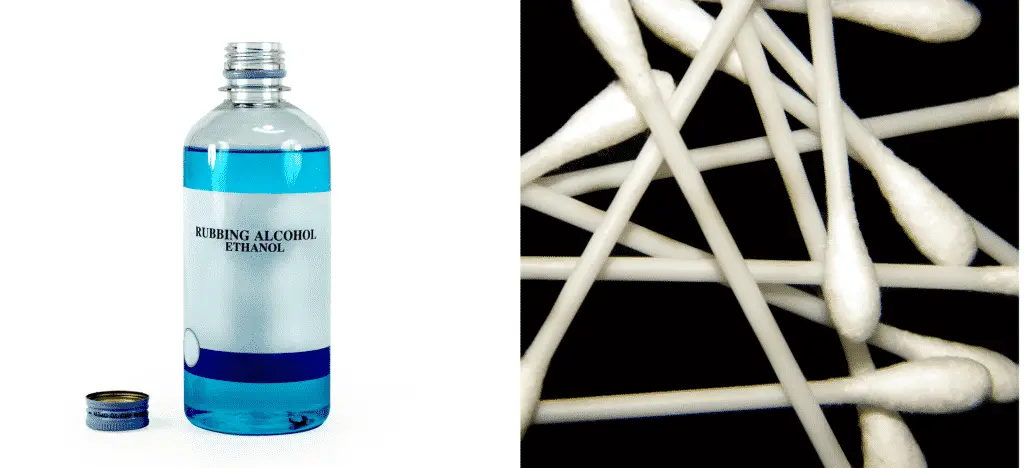
If you’re still having a problem after tightening all the connections, it usually boils down to the electrical connection. That can be fixed very easily with rubbing alcohol and a Q-Tip. Dirt and grime build up on the electrical connections over time, but you can easily clean them off.
Sometimes it can come from the factory dirty so make sure you check all the connections to see if there’s any buildup. It doesn’t matter how old your flashlight is, you should always try to clean the electrical connections to see if that cures the flickering problem.
I’m always amazed by how much carbon and dirt can build up on the inside of a flashlight. After a few years of use the contact rings and springs will start to look black and have smudges all over the place. Cleaning all the connections on the edges of the body, head, bezels, end caps, battery contacts, spring assembly, retaining rings, etc.
One of the best ways to clean off the electrical connections is to use a Q-Tip and rubbing alcohol on all the connections. Just soak the Q-Tip in rubbing alcohol and wipe down all of the connections. It will eventually start come back, but it’s easy to clean off so that’s not a big deal.
5. Check For Burrs On The Body Assembly (Not Very Common)

You can occasionally get a burr on the end of the flashlight body assembly that can cause a poor connection. I used to work in a camping gear repair shop so I’d have to repair 10-20 flashlights per week. I only had to deal with burrs a handful of times and it was usually a secondary issue, but it was on the list of things that I had to check.
If you notice any burrs or weak connections on the machined edges of your body assembly you’ll have to deal with the problem. The flashlight body is used to conduct electricity so any kind of burrs could cause connection issues. This is usually only an issue when threads are anodized, but it can cause problems tightening any piece of the body assembly.
Run your finger over the edge of the body assembly to check for burrs. It should feel smooth to the touch. Any bumps or sharp spots in the edges could be causing connection issues. That small high spot could be the only piece making a connection so you need to sand it down.
Just place a piece of medium/high grit sandpaper on a table and run the body over top of it. Keep sanding until the edge feels smooth to the touch. It’s easy to sand down aluminum so it shouldn’t take longer than 30 seconds to a minute to wear down any burrs.
Once you’re done sanding the body, it’s a good idea to rub down the body connections with a Q-Tip and rubbing alcohol. This won’t make a huge difference since it’s a large connection, but it should help increase the battery efficiency a little bit. So it’s worth taking the extra 30 seconds to do the job right.
6.Loose Flashlight Wiring and Bulb Issues
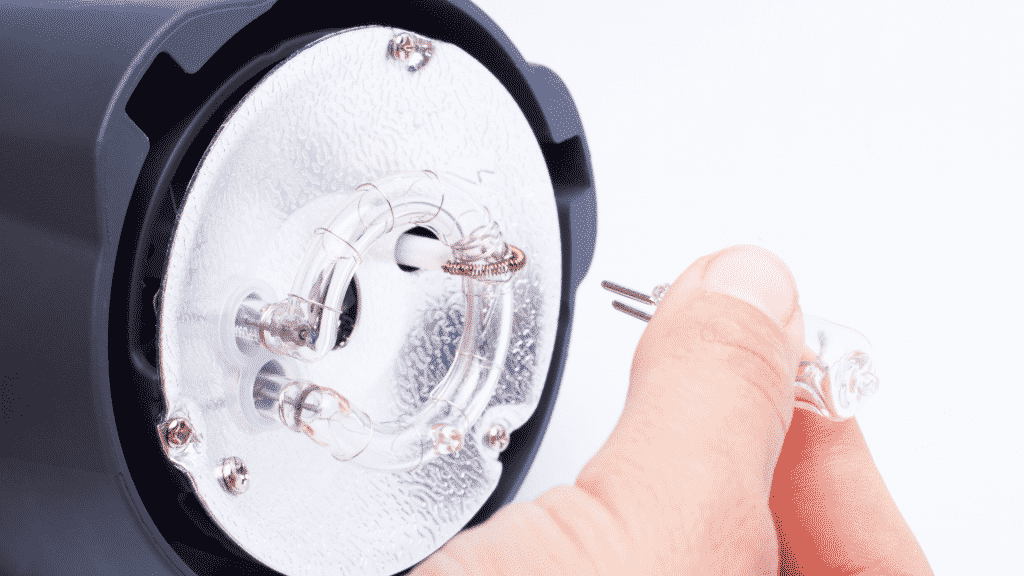
On halogen and incandescent flashlights you may run into issues with loose wiring and loose or old bulbs, but that won’t a problem with modern LED flashlights. A loose bulb may cause flickering issues, but that can easily be fixed by tightening it up.
If it’s an old bulb that you’ve been using for a while this is the perfect time to replace the bulb with a modern LED bulb. You can get the same lumen value while using a fraction of the energy (25% of incandescent and 10% of halogen).
A flashlight’s wiring is rarely a problem unless you’re messing around with the flashlight head and accidentally break them off. Most flashlights have 4 wires. There’s one hot wire connecting the driver to the bulb and 3 wires connecting the the battery pack to the driver.
This is one of those steps that you should only check as a last resort. You’re more likely to break off the connections than find a problem with the soldering. If none of the fixes below work, check the soldering that attaches each of the wires.
Make sure each of the wires are completely covered in solder and none of them are loose. If you notice a loose wire you’ll have to solder it back onto the flashlight driver and battery connector spring. Soldering is a fairly simple process and you should be able to figure it out after watching a short YouTube video.
Some LED Flashlights Are Designed To Rapidly Flicker To Reduce Battery Usage
How fast is your LED flashlight flickering? If it’s a slow flicker than it’s some kind of battery current issue somewhere in the system. A fast flicker that’s very hard to see may just be the way the flashlight was designed.
Flashlights need to have some kind of power regulation device that limits the amount of power going to the LED. Premium flashlight manufactures use a current modulation device (called the driver) to control the current using sophisticated circuitry. This type of setup needs to be designed specifically for the LED’s characteristics and the type of battery used, which makes it more expensive.
Budget manufacturers get around the government regulations by using a method called PWM (aka Pulse width modulation). They use a very fast strobe effect to regulate the current. Quality PWM flashlights will flash faster than the eye can see at about 240 frames per second (we see 30-60 fps).
That works great, until it doesn’t. When a PWM flashlight is working well you won’t notice a difference, but when it’s not working right it can create a strobe affect that’s barely noticeable. It might not sound like a big deal, but it can cause headaches, nausea, and make you dizzy.
